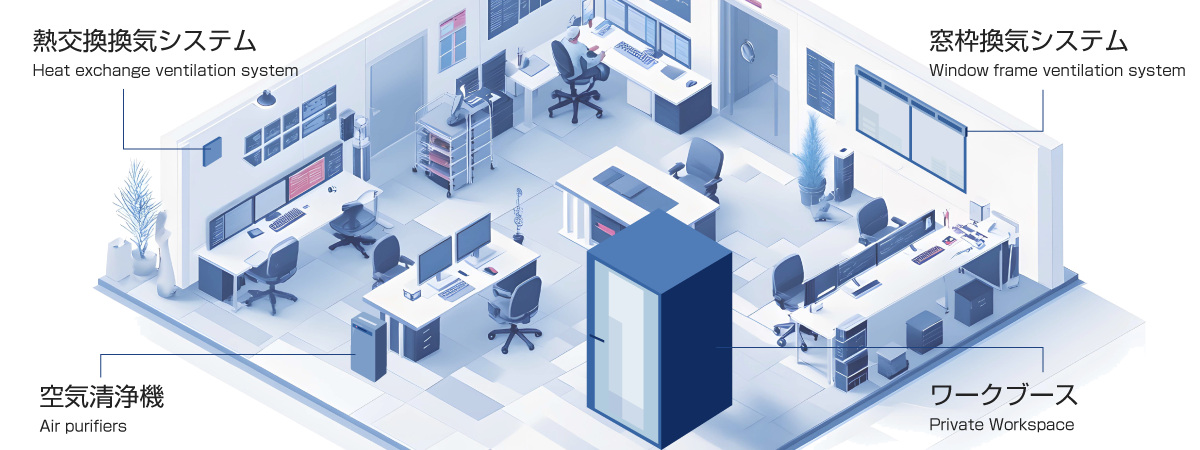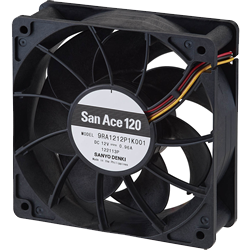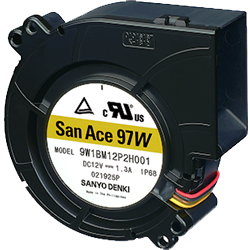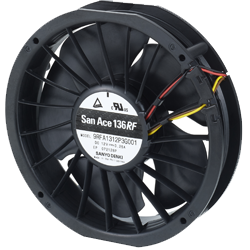



-
- Free Word Search




In the offices and homes where we spend much of our time, comfortable environments are maintained through air conditioning and ventilation.
Fans play a vital role in these air conditioning and ventilation systems, so it is essential to choose an appropriate fan for the application.
This article explains the characteristics of fans required for air conditioning and ventilation, specific usage scenarios in the office, and the types of fans used.
Let's take a look at where fans are used in the office.

In air conditioning and ventilation systems installed in offices and homes, fan quietness is a very important factor.
For example, in an office, people want a quiet environment so they can concentrate on their work, and loud fan noises can reduce work efficiency and even cause stress.
Selecting a fan with excellent noise reduction will help create a comfortable and productive space.
Waterproof fans are required for ventilation systems used in places with a lot of moisture, such as window frames and bathrooms.
The use of Splash Proof Fan that can be used safely even in wet environments leads to improved reliability.
You might also like: What is Splash Proof Fan?
In offices, air conditioning and ventilation systems are often used for long periods of time, making reducing power consumption an important issue.
Choosing a fan that consumes less power not only reduces costs, but also contributes to reducing the burden on the environment and helping to realize a sustainable society.
Achieves low noise and power consumption while maintaining high airflow performance. Wide lineup from 60 to 140 mm.

Compared to our previous product*1, the load noise has been reduced by approximately 13dB(A).
Power consumption has been reduced by approximately 44% compared to our previous model*2.
*1 Comparison between our conventional product, model number 109R0812G401, 80 mm thick x 25 mm thick, and the low noise fan, model number 9RA0812G4001, 80 mm thick x 25 mm thick.
*2 Comparison between our conventional product, model number 9A0912G401, 92 mm x 25 mm thick, and the low noise fan, model number 9RA0912G4001, 92 mm x 25 mm thick.
This blower has excellent waterproof and dustproof performance. Because of its high static pressure, it is suitable for intake and exhaust of equipment with high ventilation resistance.

Waterproof and dustproof with protection rating IP68
Ideal for intake and exhaust of equipment with high ventilation resistance
The direction of the wind and the rotation speed can be controlled using a PWM signal. The wind direction can be changed with just one unit, which contributes to cost reduction and space saving.

| Airflow direction | Rotational speed [min-1] | maximum airflow [m3/min] | maximum static pressure [Pa] | Noise level [dB(A)] | Power consumption [W] |
| Positive direction | 5,450 | 2.10 | 285 | 49 | 3.0 |
| Reverse direction | 5,450 | 2.05 | 280 | 52 | 3.0 |
Supervised by: Ryuji Ueki, Group Manager, San Ace Group, Sales Division, SANYO DENKI CO., LTD.
Release date: